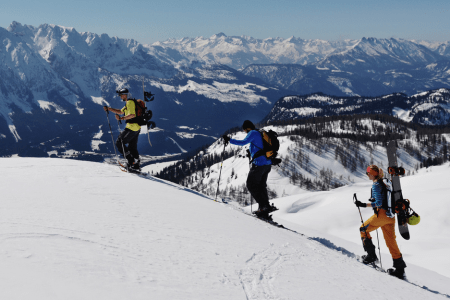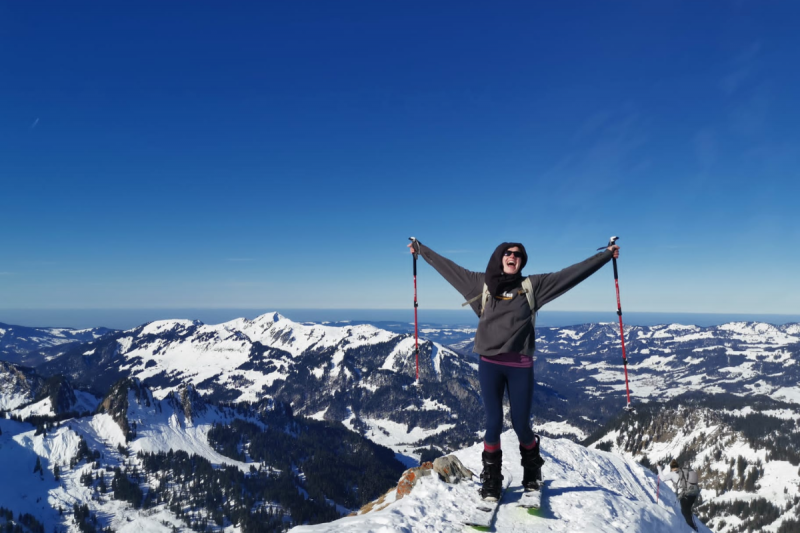“I’m going bouldering at the weekend… but what do I actually need?” In this article, you can find out what equipment and knowledge you need to make your first day of bouldering on the rock a complete success. Because when bouldering outdoors, there is a lot more to consider than in the bouldering hall to ensure your own safety and the protection of the natural bouldering routes.
Outdoor bouldering – Good to know
Before you can get started, you first need to find out where the nearest bouldering crags are. You can find some inspiration for potential destinations in our blog article on bouldering areas in Germany. A comprehensive overview is provided by so-called “topos”, which are route books that describe the approach and ascent as well as the location and difficulty of the individual boulder problems. First of all, find out which area you would like to visit and whether there are routes at your ability level.
While getting there by car or public transport is usually relatively straightforward, the approach (from the parking lot/train station to the crags) can turn into several hours of guesswork. The way to the bouldering crags is rarely signposted, often small paths lead to the routes. It is therefore easiest if you are traveling with experienced climbers who already know the way to the rock. Once you reach the crags, the search game really starts: it is not easy at first to match the schematic drawings in the topo to a real crag. Here too, experienced guides can help.

Orientation for outdoor bouldering
Once you have found a promising route, you will quickly realize that orientation is still a challenge. “Reading routes” outdoors is a much more exciting task than with the color-coded hall holds. With regard to the routes outlined in the topos, there are two special features to bear in mind: As a rule, everything you can “reach with your arm and leg span” to the left and right of the outlined line is “allowed”. With “defined bouldering”, however, individual structures are deliberately omitted in order to increase the athletic challenge of the route. Furthermore, it is usually specified whether the boulder should be started standing, sitting or even lying down.
Bouldering on the rock – the right technique
Indoor routes, especially the easy ones, are often designed to be “user-friendly”: the start holds are often between hip and head height, the route is clearly visible at a glance and you can climb down from the top hold in a relaxed manner. Outside, however, even “muddling” into a sitting or lying start can be a challenge. In addition to the entry, the exit also requires special movement skills. As there is usually no defined top hold at the end of the route, you have to “get out” on the rocks. This requires the so-called mantle technique. With the mantle, the upper edge of the rock is held with both hands and one foot is also placed or crouched over the edge. A pulling movement then turns into a supporting movement until the second foot can also be placed over the edge of the rock. This is an exciting exercise, especially at a height of 2, 3, 4 or 5 meters!
Safe outdoor bouldering
In order to be well secured from the start to the finish, bouldering partners must be proficient in spotting. Spotting ensures that in the event of a fall, the feet land on the crash pad first (see below – “Equipment”) so that the fall energy can be slowly transferred to the ground by bending the legs (and possibly rolling backwards). The person securing the fall stands behind the crashpad with their legs slightly bent and their arms almost straight (thumbs resting on the crashpad – risk of sprains!). Spotting, aligning and readjusting the crashpad during bouldering requires a lot of practice to ensure safe bouldering!
Outdoor bouldering – The material
In addition to indoor equipment (climbing shoes and chalk bag), outdoor bouldering requires additional equipment. The most important is the crash pad. Crash pads, or bouldering mats, are portable fall protection mats, the invention of which has significantly increased safety when bouldering. The use of crash pads is now standard in most bouldering areas. However, they are not cheap (approx. 100-250€) and quite bulky to transport. Therefore, it is worth traveling to the crag with several boulderers or crash pad owners 😉 and sharing the mats. In addition, brushes and shoe mats are important to keep the rock surface clean and thus protect the rock structure (see below – bouldering etiquette). As with any outdoor activity, a first aid kit and possibly sun and insect repellent are recommended. A topo (bound or in digital form) is obligatory for orientation on the rock, especially if you are there for the first time.
Bouldering etiquette for outdoor bouldering
There are indoor rules in the hall (which you agree to comply with when you register for the first time). Outside, there are also rules for your own safety, for defusing conflicts with other forest users and, above all, for nature conservation. However, these regulations are different in each area, which is why it is essential to find out about the rules and prohibitions in advance.
The general rules include
- Only walk on existing paths (especially in nature reserves)
- Clean the soles of your shoes before every (!) climbing attempt
- Do not leave any garbage behind
- Fire only in designated areas
- No loud music
- Respect and protect flora and fauna
The aim is therefore to “leave no trace”. There is often little understanding for the vertical fun on the small boulders and in the event of conflicts, forest owners, residents etc. usually have the upper hand. In order to avoid rock closures, particularly considerate behavior is required from us boulderers.
Let’s go outside!
If you fancy outdoor bouldering but lack the knowledge of organization, equipment, climbing and safety techniques, then book one of our bouldering day trips! Our trainers will be on hand with help and advice as well as equipment and know-how. All you have to do is register, pack your rucksack and come to the meeting point.





